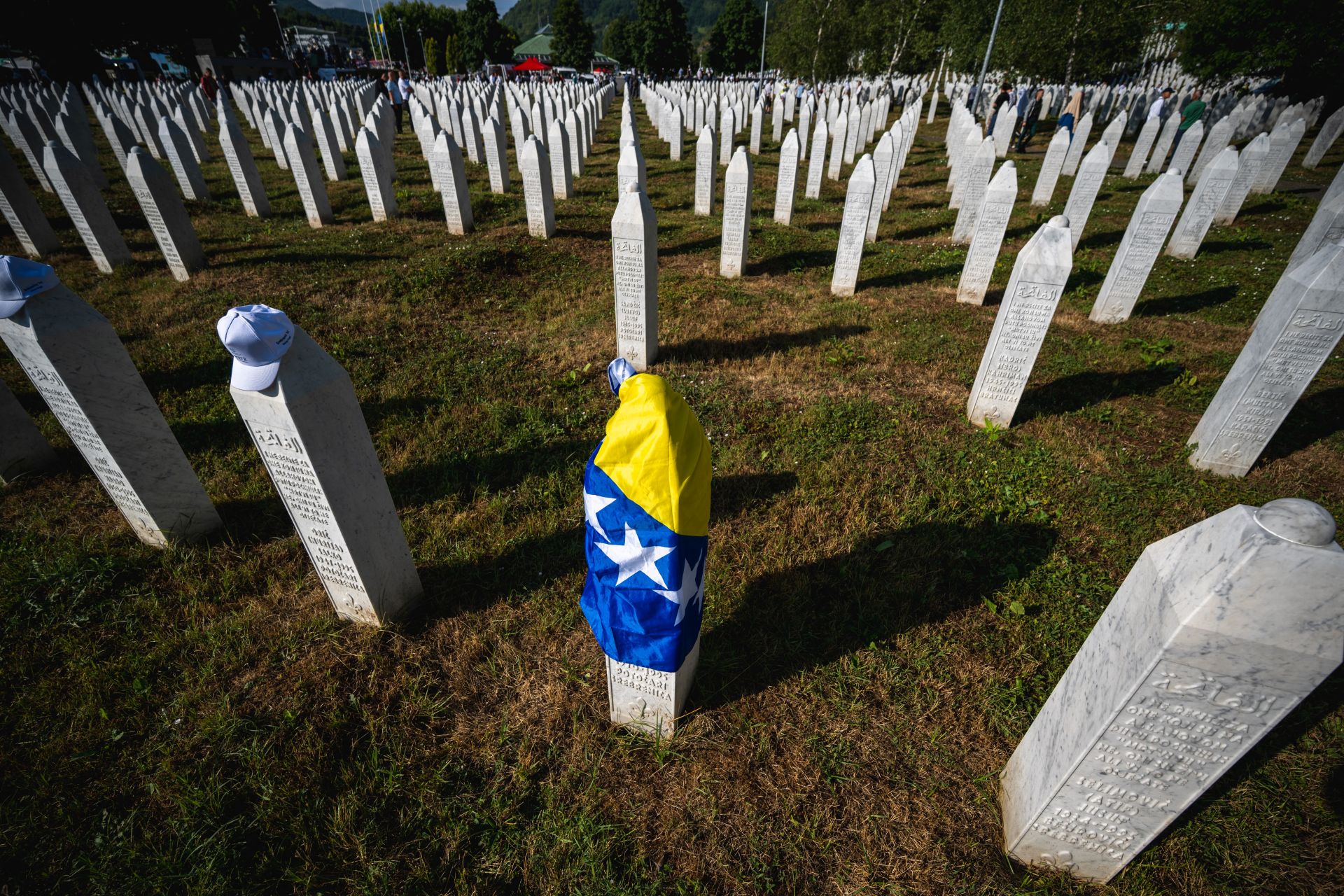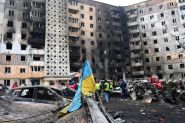- Home
- Middle East
- Bosnia Commemorates Srebrenica Genocide 30 Years On

Marking 30 years since the Srebrenica genocide, thousands gathered in Bosnia to remember the massacre of 8,000 Muslim men and boys by Bosnian Serb forces. Seven more victims were laid to rest, as survivors mourn and call for recognition amid continued genocide denial by some Serb leaders. ©ANDREJ ISAKOVIC / AFP
Thousands of people were gathering in Srebrenica on Friday to commemorate the genocide committed 30 years ago by Bosnian Serb forces, one of Europe's worst atrocities since World War II.
On the eve of the commemorations, thousands of Srebrenica peace marchers who have walked more than 100 kilometers (62 miles) in memory of the victims and survivors of the massacre arrived at the Srebrenica-Potocari Memorial Center.
The remains of seven victims of the massacre will be laid to rest during commemorations, marking the bloodiest episode of Bosnia's inter-ethnic war in the 1990s.
The war broke out after Bosnia declared independence, a move supported by the country's Muslims and Croats, but rejected by Serbs.
On July 11, 1995, after a siege of more than three months, Bosnian Serb forces captured the eastern town, which was at the time a UN-protected enclave.
They killed 8,000 Muslim men and boys in the following days and buried them in mass graves.
Around 100 women were killed in the massacre, 80 of whom remain missing.
So far about 7,000 victims have been identified and buried while about 1,000 are still missing.
In a bid to cover up the crime, the Bosnian Serb authorities had the remains removed to secondary mass graves, causing many of the bodies to be shredded by heavy machinery, according to experts.
Thirty years of pain
"For 30 years we have carried the pain in our souls," said Munira Subasic, president of the association Mothers of Srebrenica.
Her husband Hilmo and 17-year-old son Nermin were killed in the massacre.
"Our children were killed, innocent, in the UN protected zone. Europe and the world watched in silence as our children were killed."
The seven victims buried on Friday at the memorial center included a 19-year-old man and a 67-year-old woman.
The remains of most of the victims are incomplete and in some cases consist only of one or two bones, experts said.
The families have waited for years to bury their loved ones, hoping that more remains would be found.
But Mevlida Omerovic decided not to wait any longer to bury her husband Hasib.
He was killed at the age of 33, probably in Petkovci, around 60 kilometres (37 miles) north of Srebrenica.
Around a thousand people were transported there and locked up in a school before being executed.
It is one of five mass execution sites of the massacre, the only atrocity of Bosnia's 1992-1995 war that was qualified as genocide by international justice institutions.
"Thirty years have passed and I have nothing to wait for anymore," said Omerovic, 55.
She wants to be able to visit the grave of her husband, even though only his jawbone will be in the coffin.
Visiting the graves of her two sons Sajib and Sinan, killed in the massacre in their early 20s, enables Nezira Mehmedovic to feel closer to them.
"I like the most to come here to my sons. I talk to them, I cry, I pray, I kiss them ... and for thirty years like that," she told AFP sitting next to her sons' graves.
"My heart aches for them constantly," the 75-year-old woman said crying. "They say life goes on ... But how?"
Serb denial
Bosnian Serb wartime political and military leaders Radovan Karadzic and Ratko Mladic were sentenced to life imprisonment by an international tribunal, notably for the Srebrenica genocide.
But Serbia and Bosnian Serb leaders continue to deny that the massacre was a genocide.
"The Serbs did not commit genocide in Srebrenica... it did not happen", Bosnian Serb leader Milorad Dodik said this month.
Last year, an international day of remembrance was established by the United Nations to mark the Srebrenica genocide, despite protests from Belgrade and Bosnian Serbs.
"July 11 is a day of great sadness and pain," Ramiza Gurdic, whose husband Junuz and sons Mehrudin and Mustafa were killed in the massacre, told AFP.
"But for me, every day is July 11, every night, every morning, when I get up and realize that they are not here."
By Rusmir SMAJILHODZIC/AFP
Read more




Comments